January 20, 2021
Cars are making gains – in weight and size.
Key Points:
-
Most modern cars have more than 50% more power than their grandparents
-
Regulations, R&D and competition all play a part in automotive improvements
Have you noticed that cars from the 1990s and prior were smaller? If so, you’re not alone. OnlineLoans goes over some numbers that show just how far car weight and size (and power) has come.
Not sure? Check out these stats
| – VW Golf | Length x Width (mm) | Weight |
|
1975 VW Golf GTi |
3705 x 1610 |
800kg |
|
2009 VW Golf GTi |
4213 x 1779 |
1370kg |
|
New Model Increase: |
25.6% Bigger |
71.25% Heavier |
| – Toyota Rav4 |
|
|
|
1994 Toyota Rav4 (4 door) |
4150 x 1695 |
1150kg |
|
2019 Toyota Rav4 (4 door) |
4570 x 1855 |
1620kg |
|
New Model Increase: |
20.5% Bigger |
40.8% Heavier |
| – Jeep Grand Cherokee |
|
|
|
1994 Grand Cherokee |
4547 x 1801 |
1666kg |
|
2021 Grand Cherokee |
4822 x 1943 |
2307kg |
|
New Model Increase: |
14.4% Bigger |
38.5% Heavier |
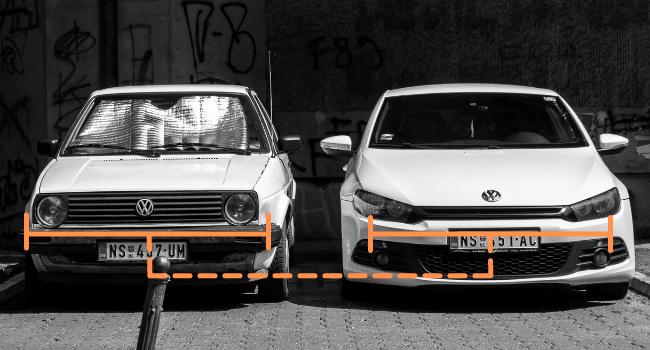 (1970’s VW Golf on the left, today’s Golf on the right)
(1970’s VW Golf on the left, today’s Golf on the right)
But have cars been hitting the gym or the couch?
The gym. Cars are far more powerful than they used to be. Understandable, as technology and manufacturing methods have improved.
Not sure? More stats:
-
1980 Porsche 911: 201 horsepower (when it was new).
-
2021 Porsche 911 Carrera: 379 horsepower (base model)
From 1980 to 2021, the Porsche 911 gained around 457kg – a nearly 40% increase, and its power went up by 88.5%.
Here are some other cars that have hit the gym
| – Toyota Camry | Horsepower |
|
1994 Camry |
130 hp |
|
2020 Camry |
203 hp |
|
Increase % |
56% more powerful |
| – Mercedes-Benz C-Class |
|
|
1994 C-Class |
148 hp |
|
2020 C-Class |
255 hp |
|
Increase % |
72% more powerful |
| – Nissan GT-R |
|
|
1989 GT-R |
276 hp |
|
2020 GT-R |
565 hp |
|
Increase % |
104% more powerful |
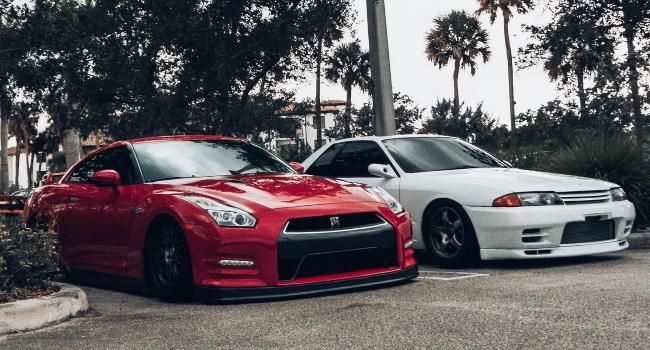 (Today’s Nissan GT-R in red, early 1990’s Nissan GT-R in white)
(Today’s Nissan GT-R in red, early 1990’s Nissan GT-R in white)
Don’t heavier cars need more power to equal the acceleration of older cars?
Despite their weight gain, cars have become much faster. Drivetrains, transmissions and suspension systems have improved over the last 20 years which has allowed manufacturers to chop down acceleration times.
Looking at 0 – 60 mph (around 96.5 kph) times, we’re now spoilt for speed:
-
1992 Mazda MX-5: 9 seconds
-
2020 Mazda MX-5: 5.7 seconds
It’s pretty much across the board too. The average 0 – 60 mph time for cars in the early ‘80s was around 13 seconds – today that time has almost halved to around 7 seconds. In fact, even a 2018 Toyota Land Cruiser runs 0 – 60 mph in 6.7 seconds, which is down from 14.2 seconds in 1989. That’s over 52% faster.
Some of the fastest 0 – 60 mph times over the years
|
Fastest Car per Year: |
0 – 60 mph (96.5 kph) time: |
|
1970 Chevrolet Corvette C3 LS6 |
5.3 seconds |
|
1986 Porsche 959 |
3.6 seconds |
|
1991 Bugatti EB110 |
3.4 seconds |
|
1993 McLaren F1 |
3.2 seconds |
|
2005 Bugatti Veyron |
2.4 seconds |
|
(Current Champion: Tie) Tesla Model S Performance Bugatti Chiron |
2.4 seconds 2.4 seconds |
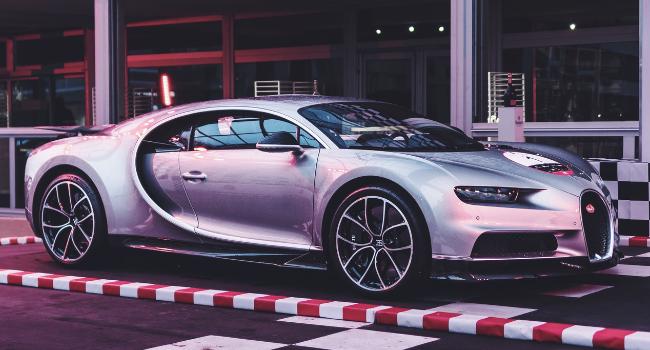 (The Bugatti Chiron – yours for $3.9 million)
(The Bugatti Chiron – yours for $3.9 million)
But ‘fastest’ isn’t always measured in speed. Manufacturers build and sell cars at a lightning pace these days.
Don’t cars need more petrol to move more weight faster?
Manufacturers have put endurance training on the program as well as muscle building.
In the late 1970s, cars averaged around 12.6 litres / 100km. Today, that’s down to around 10.6 litres / 100km.
Here are some of the most fuel-efficient petrol (non-hybrid or EV) cars selling today:
-
Audi A1 Sportback 1.0 TFSI – 4.4 litres / 100km
-
Suzuki Swift – 4.6 litres / 100km
-
Skoda Fabia – 4.5 – 4.7 litres / 100km
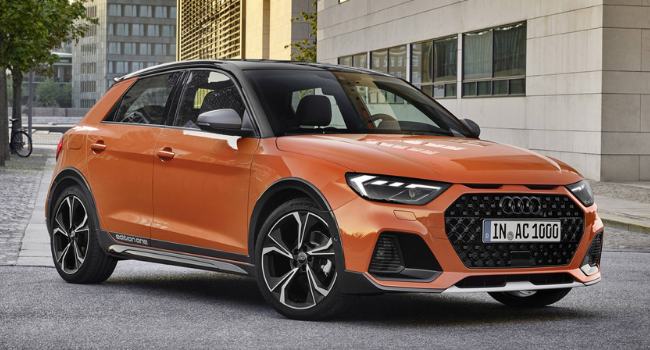 (2020 Audi A1)
(2020 Audi A1)
Model Comparisons
| – Toyota Corolla | Fuel Consumption Litres / 100km |
|
1988 Corolla |
7.7 |
|
2021 Corolla |
6.1 |
|
Decrease % |
20.7% more fuel-efficient |
| – BMW 318i |
|
|
1990 318i |
8 |
|
2021 3-Series |
6.5 |
|
Decrease % |
18.75% more fuel-efficient |
| – Jeep Grand Cherokee |
|
|
1994 Grand Cherokee |
14.8 |
|
2021 Grand Cherokee |
10 |
|
Decrease % |
32.4% more fuel-efficient |
How have car wizards achieved this sorcery?
Modern techniques allow designers to accurately measure and predict key data like heat transfer and stress. Today’s engines are able to accurately spray fuel into cylinders at precise times as well as efficiently cool the hotter parts.
“Regulations have pushed oil and fuel refineries to develop more efficient, safer and ultimately, purer fuel.”
Fuel quality has also dramatically improved. Thanks to government regulations, lead and other toxic chemicals have been removed or reduced from petrol. These regulations have pushed oil and fuel refineries to develop more efficient, safer and ultimately, purer fuel.
Furthermore, safety standards, emissions regulations and the competitive nature of the auto industry have pushed manufacturers to pour money into research and development. Good news for consumers.
Did you know? In the 1960s, children living in areas with high exposure to vehicle emissions reported higher rates of behavioural disorders, low IQ, reading and learning disabilities, and nerve damage. This was mainly caused by low-level lead exposure. Leaded petrol was completely banned in Australia after 1 January 2002.
Why are cars growing?
Our thirst for SUVs and Utes
Like the US, Europe and, in more recent times, Asia, Australia has developed a love affair with SUVs and utes.
For example, in 1980, Australia’s most popular car was a sedan, the Ford Falcon. That trend didn’t change for a while:
- 1985: Ford Falcon
- 1990: Holden Commodore
- 1995: Ford Falcon
- 2000: Holden Commodore
- 2005: Holden Commodore
- 2010: Holden Commodore
-
2015: Ford Ranger (enter the utes and SUVs)
 (The XF Ford Falcon, once Australia’s most popular car. Source: commons.wikimedia.org)
(The XF Ford Falcon, once Australia’s most popular car. Source: commons.wikimedia.org)
2020’s most popular; the Toyota HiLux followed by the Ford Ranger and Toyota RAV4 respectively. All 3 are utes / SUVs.
In the US in 2020, the Ford F-Series ute (pickup) was the most popular vehicle.
Automakers pay (a lot of) attention to what earns dollars.
Did you know? The 1984 Jeep Cherokee is considered by many to be the first modern ‘SUV’, the one that kicked off the craze. Although there were similar-style vehicles available prior to the ‘84 Cherokee, most others didn’t offer the seating and cargo space of the Jeep. Its huge popularity pushed competitors like Ford, Nissan, Toyota and others to quickly release or redesign their own versions.
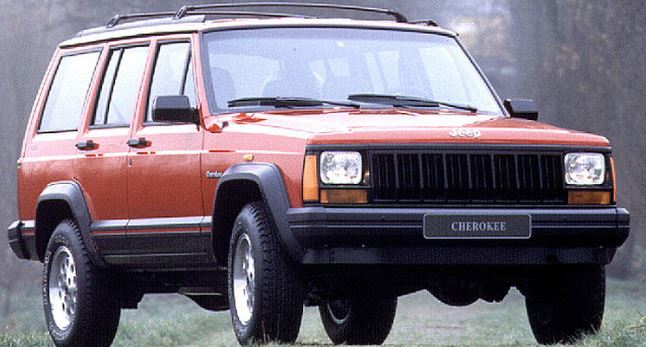 (The 1984 Jeep Cherokee. Source: autoevolution.com)
(The 1984 Jeep Cherokee. Source: autoevolution.com)
Tech is heavy
Heated seats, cooled seats, adaptive cruise control, adaptive headlights, automatic tailgates and all those other amazing innovations add weight.
Adjustable seats with heating and cooling can weigh up to 35kg each. A high-quality stereo with wiring and speakers – around 15kg
Add in all the extra lighting, screens, charge ports, sensors (like parking sensors) and cameras plus the extra wiring required and it’s easy to see where all that weight comes from.
Did you know? Most passenger cars use around 1% more fuel for every extra 25kg they carry. Make sure you’re not carrying around extra cargo you don’t use often.
Safety is heavy
Consumers demand safe family cars and automakers listen. Airbags, for example, weigh around 2.2kg and most modern cars have 10 or so. Add on tyre pressure monitors, intrusion beams, stability control, extra seat belts in 3-row SUVs and the weight again adds up.
ANCAP (Australasian New Car Assessment Programme) is responsible for testing and rating a vehicle’s safety. They test four key areas:
-
Adult Occupant Protection (AOP)
-
Child Occupant Protection (COP)
-
Vulnerable Road User Protection (VRU)
-
Safety Assist (SA)
Did you know? Most modern cars sold in Australia have a 5-star ANCAP rating thanks to safety features (that add weight) but it hasn’t always been the case.
Check your vehicle’s safety rating.
The world’s roads
In China, around 25.5 km of road is built every day. Here in Australia, we lay claim to the world’s longest national highway – the Australia Highway 1 (aka the ‘Big Lap’), which is 14,500 km long.
 (Part of China’s highway network in Shanghai)
(Part of China’s highway network in Shanghai)
Amazingly, the ‘Big Lap’ wasn’t even completely sealed until 1989. In other words, there were gravel sections up until that year.
With the dramatic increase in paved roads and overall road quality, car journeys (road trips) became a popular option.
Did you know? In 1990, there were roughly 500 million cars driving on Earth’s streets. Today, that figure is around 1.4 billion – a 180% increase.
Car Weight Gain Weigh Up
As cars become safer, more reliable and more practical, the cost in weight and size increases. But that’s not a bad thing as fuel efficiency and performance haven’t taken a hit.
Neither has the price. For example, when new in 1988, a Holden Commodore (VN) came at a price of around $46,000 in today’s money. Current models command around $10,000 less.
If your car is lacking the fuel economy, performance, safety and technology of today’s cars, get a quick quote to see your options. OnlineLoans can help you get your next car loan much easier.
More information about big cars.
Sign Up to the OnlineLoans.com.au Newsletter
Get offers, contests and promos delivered straight to you inbox
